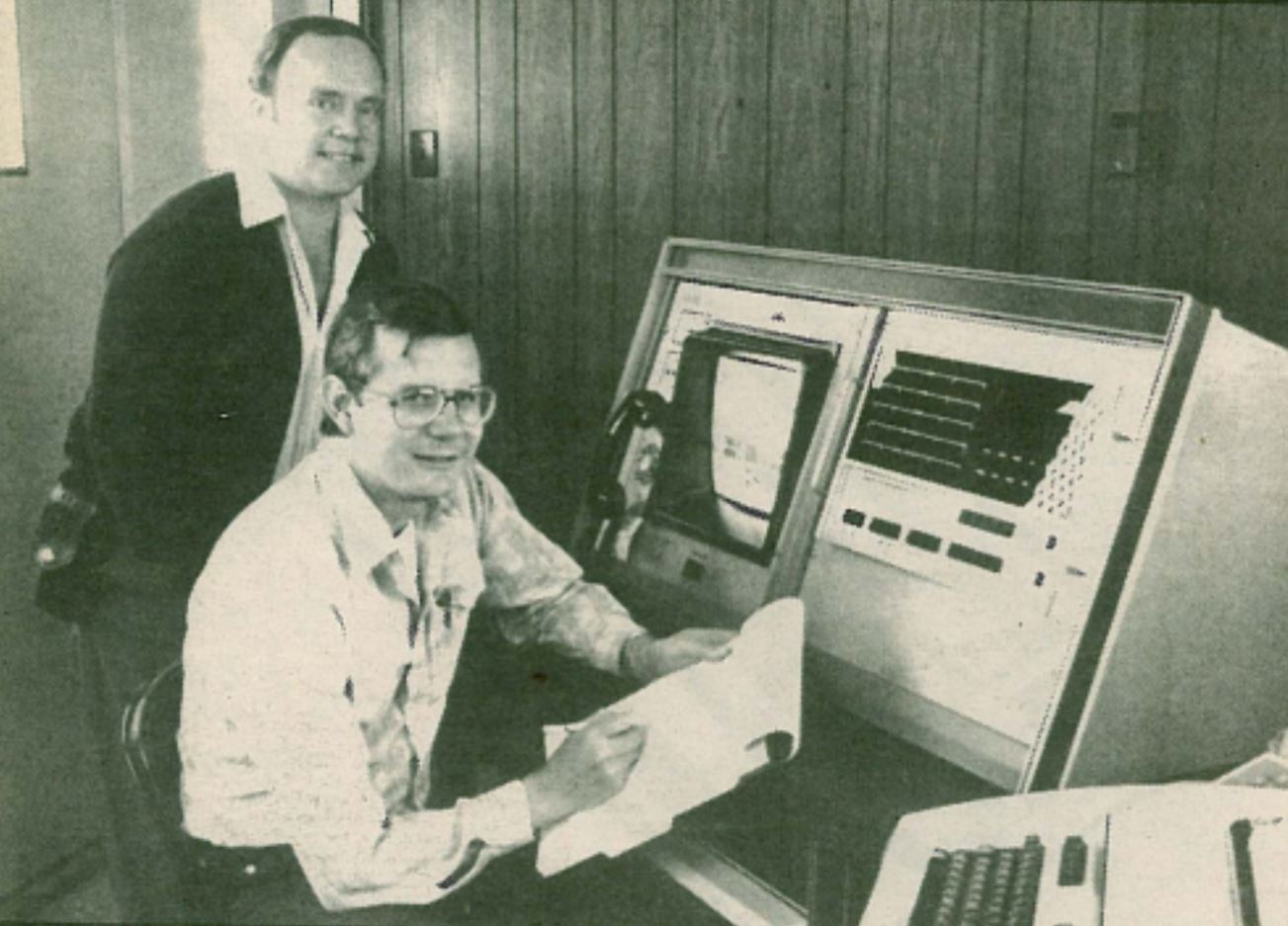Master Computer Monitors Traffic Moves
Master Computer Monitors Traffic Moves

Whether you are entering, leaving, or proceeding down the new visage of Hopyard Road, you will never have to wait very long for a green light, thanks to a sophisticated new traffic computer that is on the job monitoring the traffic signals in the North Pleasanton area.
The MultiSonic VMS 220, which was purchased by the developers of Hacienda Business Park now smoothly controls the progression of an estimated 15,000 to 20,000 automobiles which travel or cross over Hopyard Road each day.
Nineteen intersections along Hopyard Road, Santa Rita Road and throughout Hacienda Business Park are currently being monitored by the system, which guides traffic progression through a series of magnetically sensitized wires. These "detector loops," as they are called, are installed under the streets and then connected to a controller unit at each intersection. The loops of these wires undergo a change in their magnetic fields when vehicles approach. The loops feed information to individual controller units at the intersections, which in turn send information on to the master computer at City Hall which controls the signals.
There are two sets of detector loops that feed information into the controller: "Stop bar loops," located at the 12 inch wide white lines at crosswalks. These stop bar loops give information from the vehicles that are at a standstill at the intersection; "Advance loops," are the detector loops which are located 180-200 feet in front of the signal. These loops "sense" oncoming traffic and signal the controller unit which in turn tells the computer to keep the light green a while longer so that more traffic can get through on the green light. This additional time is called "extension time."
Approaching bicycles can never set off the detector loops. "The sensitivity of the loops is highly dependent on the ferrous metals the vehicle is constructed of," comments Don Owens, Engineering technician. "Most bikes are aluminum and don't affect the system. Motorcycles sometimes do, but again, it depends on the type and amount of metal in their construction."
The type of system that operates signals based on traffic flow rather than set intervals is known as a "full-actuated system," Owens states. "Our system is sensitive to the number and speed of approaching vehicles. Other systems, such as fixed time systems, aren't as sensitive and don't depend on traffic progression to operate the signals."
Wes Jost, Senior Engineering Technician for the city, explains that the fully-actuated system will help to maintain good air quality in Pleasanton. "Stop and go traffic, such as that caused by encountering a lot of red lights, really can help contribute to air pollution and poor air quality," he says. "With the master computer, we can keep traffic progressing smoothly without that stop and go problem. In addition to doing something to keep our air clean, it also helps keep frustration down a bit."
Jost points out that someone going the speed limit (45 mph) on Hopyard Road can progress from West Las Positas Boulevard to Owens Drive with little or no need to stop for lights because of the fully actuated system.
The computer can also be reprogrammed to allow for differences in traffic flow at different times of the day. Pleasanton, for instance, has a greater number of cars leaving the city in the morning and returning in the evening. The signals can be programmed to accommodate this difference.
Another function of the computer is to keep track of the pedestrian traffic and activate the pedestrian crossing signs. When the cross button is pushed, it is automatically registered into the controller and forwarded on to the computer, which times it accordingly. "Computer reaction time is not dependent on the number of times the button is pushed. so it doesn't matter whether the button is hit 1 or 17 times, it is still going to take the same amount of time for the light to change," laughs Jost.
The MultiSonic computer currently handles traffic at 19 intersections in Pleasanton, the majority being those along Hopyard Road. The system will be expanded within the next few months to include the intersections on Santa Rita Road and West Las Positas Boulevard, when construction on these intersections is completed. Overall, the system has the capacity to handle 256 intersections and will eventually service all the traffic signals in Pleasanton, including those in the downtown area. Those signals are currently operated by a "stand alone" system which controls each individual signal without coordinating with other signals along the road. When the new master computer takes over, Main Street should be a lot easier to handle.
To see a reproduction of the original article and edition of Pleasanton Pathways, visit: March 5, 1984 Pathways.




